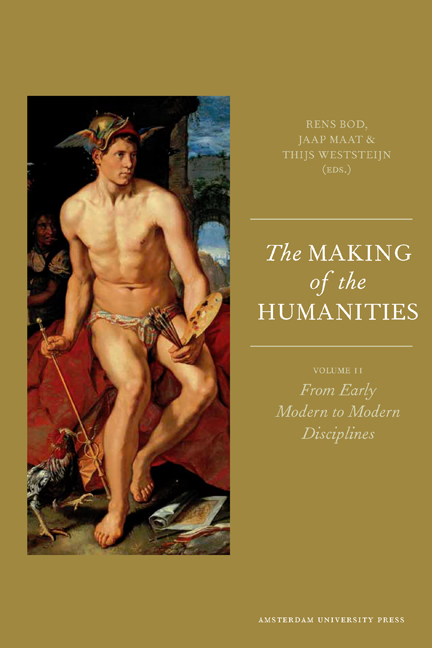Book contents
- Frontmatter
- Contents
- Introduction: The Dawn of the Modern Humanities
- I Linguistics and Philology
- II The Humanities and the Sciences
- III Writing History and Intellectual History
- IV The Impact of the East
- V Artworks and Texts
- VI Literature and Rhetoric
- VII Academic Communities
- Contributors
- List of Figures
- Index
Philology and the History of Art
Published online by Cambridge University Press: 19 January 2021
- Frontmatter
- Contents
- Introduction: The Dawn of the Modern Humanities
- I Linguistics and Philology
- II The Humanities and the Sciences
- III Writing History and Intellectual History
- IV The Impact of the East
- V Artworks and Texts
- VI Literature and Rhetoric
- VII Academic Communities
- Contributors
- List of Figures
- Index
Summary
A truly critical philology must acknowledge the claims the past is making upon us, making us thereby attend to it.
Sheldon Pollack, Future philology? (2009), 958.This essay examines several notable affinities between philological rationality and the history of art. It stems from my underlying endeavour to draw the outlines of a philological art history, which could be termed figural philology.
In order to achieve that aim, a definition or redefinition of philological rationality would be necessary, a task to which the following pages are mostly dedicated. This redefinition of philological rationality highlights and underlines the plastic aspects of philological inquiries. In the framework of the present endeavour, the notion of ‘plasticity,’ drawn both from the Greek word plasis (πƛάσις) and from modern applications of this term in the history of art, stands for the spatio-temporal deployment of forms, referring to the transfiguration of things which happens when they come in contact with other things, as well as by mere change of place. The plastic dynamics encompass all of the human domains of production, and it regards especially the meeting and transference points between the various domains; it could mean the points of contact between painting and architecture, but it could also mean contacts between painting and written texts.
Within this framework, the crucial issue standing at the possible construction of an affinity between art history and philology would be a bilateral one: On the one hand, we should ask in what manner plastic aspects are imbued in philological rationality, and on the other hand, we should make clear in what manner philological issues have been part and parcel of art-historical investigations, even if in an implicit and unwitting manner. Towards closing, I point to the notion of the ‘figure,’ as a possible binding medium between the two distinguished discourses. That capacity of the figure stems from the fact that the concept of the figure holds both philological and plastic aspects. Finally, I point to Erwin Panofsky's iconology as having an explicitly philological tenet.
- Type
- Chapter
- Information
- The Making of the HumanitiesVolume II: From Early Modern to Modern Disciplines, pp. 283 - 300Publisher: Amsterdam University PressPrint publication year: 2012



